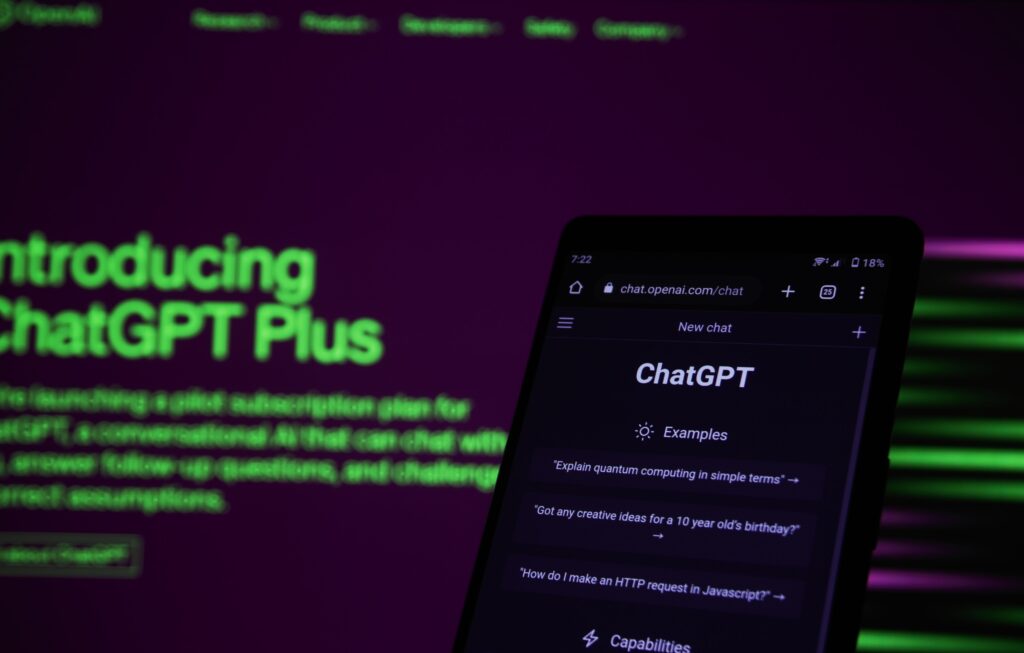
From finance to healthcare, education to travel, industry observers predict an explosion of innovations in services and new digital experiences for users.
Nicolaj Siggelkow
ChatGPT, the chatbot developed by OpenAI and launched in November 2022, quickly conquered the corporate world and following this success, Microsoft increased its investment in OpenAI and introduced a new version of its Bing search engine that provides users generate responses in response to searches, instead of providing them with thousands of links to choose from.
Unsurprisingly, Google, as the search engine market leader, has reacted quickly and is launching Bard, its own attempt to create an AI chatbot by harnessing the power of large language models and integrating it into the search process. (“Large language models” are deep learning algorithms for natural language processing that can summarize, translate and generate new text).
In addition to search, both Google and Microsoft are making their chatbots available through an API (application programming interface), thus allowing software developers from other companies to integrate their systems with these new chatbots. From finance to healthcare, education to travel, industry observers predict an explosion of innovations in services and new digital experiences for users. Leveraging the capabilities of large language models, chatbots have developed amazing capabilities to generate human-like responses and to speak in different languages and styles.
Faced with these new technological possibilities, we see executives grappling with the question of how to take advantage of this new technology and reimagine the digital customer experience. It is clear that ChatGPT and Bard still have many shortcomings (for example, hallucinations, biases and lack of transparency), but the technology is improving rapidly and is showing great promise. It is therefore the right time to start thinking about the competitive implications that will inevitably arise from this new technology. Based on our research and our recent book, Connected Strategy, we provide the following recommendations to create a winning customer experience.
Recommendation 1: Focus on the customer, not the technology.
The first knee-jerk reaction to new technologies is often to focus on the technology and ask, "What can this technology do?" We would rather encourage managers to first think of a customer pain point that needs to be addressed and then ask themselves, “How can this technology help?” To identify pain points, we find it helpful to think of the customer experience as a journey through three stages, all of which start with the letter R.
The initial stage of the customer journey is the recognition of a customer requirement. The customer or service provider (with or without a chatbot) must understand what the unmet need is. Given the ability of large language models to interpret text and integrate data, these models can make excellent assistants. For example, a user can authorize such an assistant to continuously read information such as medical records, Fitbit data, and legal documents. The AI system can then create messages that alert the user to possible incoming needs, whether it's the need for a health screening visit or the need for more comprehensive insurance coverage. Note that such customer experiences can be initiated by the chatbot, thus overcoming the forces of inertia and short-sightedness that hold back the user in many areas of life. Following the request of the chatbot, this new generation of large language models allows customers to engage in a conversation with the chatbot which helps to describe and discover the needs more clearly than in the past.
In the second stage of the customer journey, these user needs are translated into one request. Large language models are very good at extrapolating from data points and predicting what the user might want to see next. As a result, the system is able to create a list of innovative ideas on how to solve a particular customer need and to collect a series of recommendations for products and services that help to satisfy the unmet need.
Finally, the company must answer to the client. In this case, the ability of large language models to write without any human involvement can be exploited. For example, you can generate new medical reports and notify the appropriate care providers or even ask for an appointment. Similarly, contracts and insurance policies can be generated or updated. All of this can be done at the appropriate level of sophistication (report to patient or doctor) and can also be tuned to find the right tone for the user's current mood (anxious, happy, disappointed).
Recommendation 2: Focus on learning.
The three Rs we talked about (recognise, demand, respond) allow companies to build great customer experiences. To transform a series of experiences into a deeper customer relationship, a fourth R comes into play: repeat. Every time a business interacts with a customer, it should learn something new about them, so the business can do an even better job of recognizing, requesting, and responding to the next interaction. The dimension of repetition can create a powerful positive feedback loop: the more a company is able to satisfy the customer, the more likely it is that the company will have a repeated interaction with them, which in turn provides the company with a another opportunity to learn, allowing her to reward him even more in the future.
Great language role models are inherently good at learning from previous experiences. They use past interactions as feedback and train themselves to use the information they receive in interactions with a particular user. Their knowledge base with respect to a user then grows with each interaction, effectively coding the positive feedback loop we described above. Furthermore, these systems are also able to make inferences from other similar customers, further accelerating the learning process.
Recommendation 3: Use technology to supplement your capabilities, not replace them.
Thanks to APIs from Google, Microsoft and others, the ability to integrate large language models into users' digital experiences will not be limited to large technology companies. The good news is that everyone, even a small healthcare start-up or a school district with an aging technology infrastructure, will have access to this technology. But, from a strategic point of view, this is also the bad news. Integrating the skills of large language models will become a matter of principle rather than being a source of competitive advantage. In other words, it is reasonable to expect that a company that uses this technology will gain a competitive advantage over one that does not. But this may not be enough to create a winning customer experience.
By way of example, consider what happened to scooters and bike sharing. A new technology (mobile applications and GPS) has made possible a futuristic user experience in which a customer can find a vehicle, be authorized to use it remotely, enjoy it and return it wherever they want. This approach has been so attractive that several mobility providers have decided to offer the same customer experience. This was good for customers, who could switch from one supplier to another in seconds, but it caused cutthroat competition and the bankruptcy of many companies.
Companies must remember that technology alone is not a source of competitive advantage, especially when it is available to all. The key question is how a company can use it in a way that gets value out of it and increases customers' willingness to pay for it, but also that it can't be easily imitated by others.
To answer this question, we propose to view new technologies as a complement to a company's current capabilities, rather than as a replacement. Much of the current chatbot discussion is based on the mental model that AI-enabled technology will replace human labor: costs would decrease and willingness to pay would not suffer. This is probably true, but it doesn't leave much room for competitive differentiation. A better mental model is to think of chatbots as complements, enhancing a company's existing capabilities in ways that are unique to the company. To do this, it is necessary to identify the distinctive value proposition that a company offers to its customers, i.e. to deeply understand how to implement the four Rs that we described earlier. A healthcare system seeking to gain a competitive edge over its competitors through connectivity and ease of access to care will benefit more from large language patterns by seeking ways to further strengthen and improve patient relationships, instead of providing the same relationships it has provided in the past at a lower cost level.
The launch of ChatGPT will go down in business history as a milestone in which AI moved from many narrow applications to a more universal tool that can be applied in very different ways. But a technology by itself does not create value. For value creation to happen, we need to think of large language patterns as a solution to an unmet need, which requires a precise understanding of customer experience pain points. As we have said, these models can help resolve the critical points that arise along a path that includes the phases of recognition, request and response. Once value is created, companies are faced with the challenge of defending it from the competition. Since ChatGPT or similar systems can be used by all players in an industry, it is important not only to focus on the engineering problem of solving unmet customer needs, but also to address the strategic question of how it can help leverage the capabilities of an agency.
Nicolaj Siggelkow is Professor of Management and Strategy at Wharton and co-director of the Mack Institute for Innovation Management.




